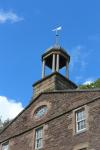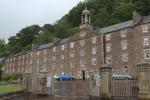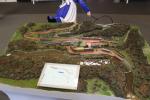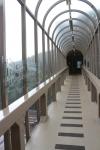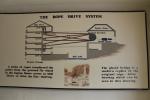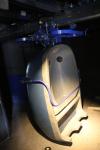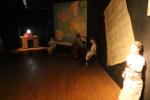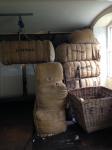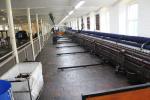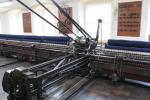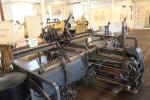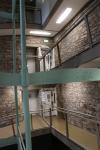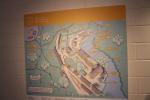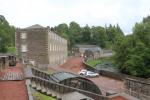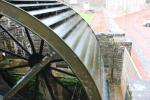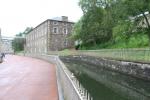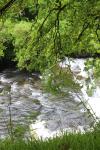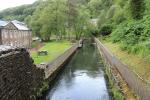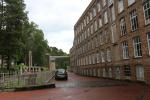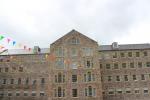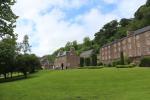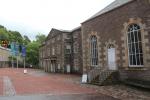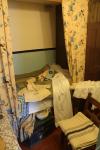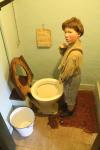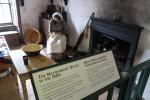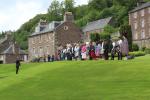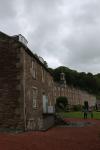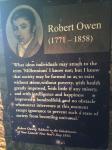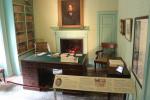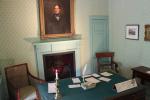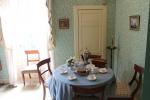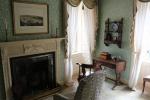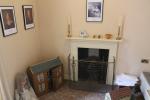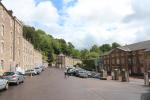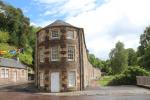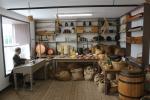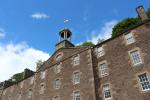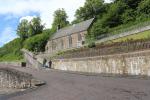New Lanark
New Lanark is a village on the River Clyde, approximately 1.4 miles (2.2 kilometres) from Lanark, in Lanarkshire, and some 40 km southeast of Glasgow, Scotland. It was founded in 1786 by David Dale, who built cotton mills and housing for the mill workers. Dale built the mills there in a brief partnership with the English inventor and entrepreneur Richard Arkwright to take advantage of the water power provided by the only waterfalls on the River Clyde. Under the ownership of a partnership that included Dale's son-in-law, Robert Owen, a Welsh philanthropist and social reformer, New Lanark became a successful business and an epitome of utopian socialism as well as an early example of a planned settlement and so an important milestone in the historical development of urban planning.
The New Lanark mills operated until 1968. After a period of decline, the New Lanark Conservation Trust (NLCT) was founded in 1974 (now known as the New Lanark Trust (NLT)) to prevent demolition of the village. By 2006 most of the buildings have been restored and the village has become a major tourist attraction. It is one of six UNESCO World Heritage Sites in Scotland and an Anchor Point of ERIH - The European Route of Industrial Heritage.
The twenty closest neighbours in the database:
Glasgow (Scotland) (37 km), Falkirk Wheel (37 km), Edinburgh (Scotland) (48 km), Stirling Castle (52 km), Doune Castle (60 km), Culzean Castle (72 km), Inveraray Castle (103 km), Alnwick Castle (133 km), Balmoral Castle (157 km), Blackpool (United Kingdom) (210 km), Fort George (Highland) (214 km), Liverpool (United Kingdom) (256 km), York (United Kingdom) (257 km), Manchester (United Kingdom) (262 km), Boyne Valley: Newgrange, Knowth and Battle of the Boyne (279 km), Llangollen (United Kingdom) (302 km), Dublin (Ireland) (304 km), Chatsworth House (305 km), Lincoln (United Kingdom) (342 km), Ludlow Castle (373 km)
